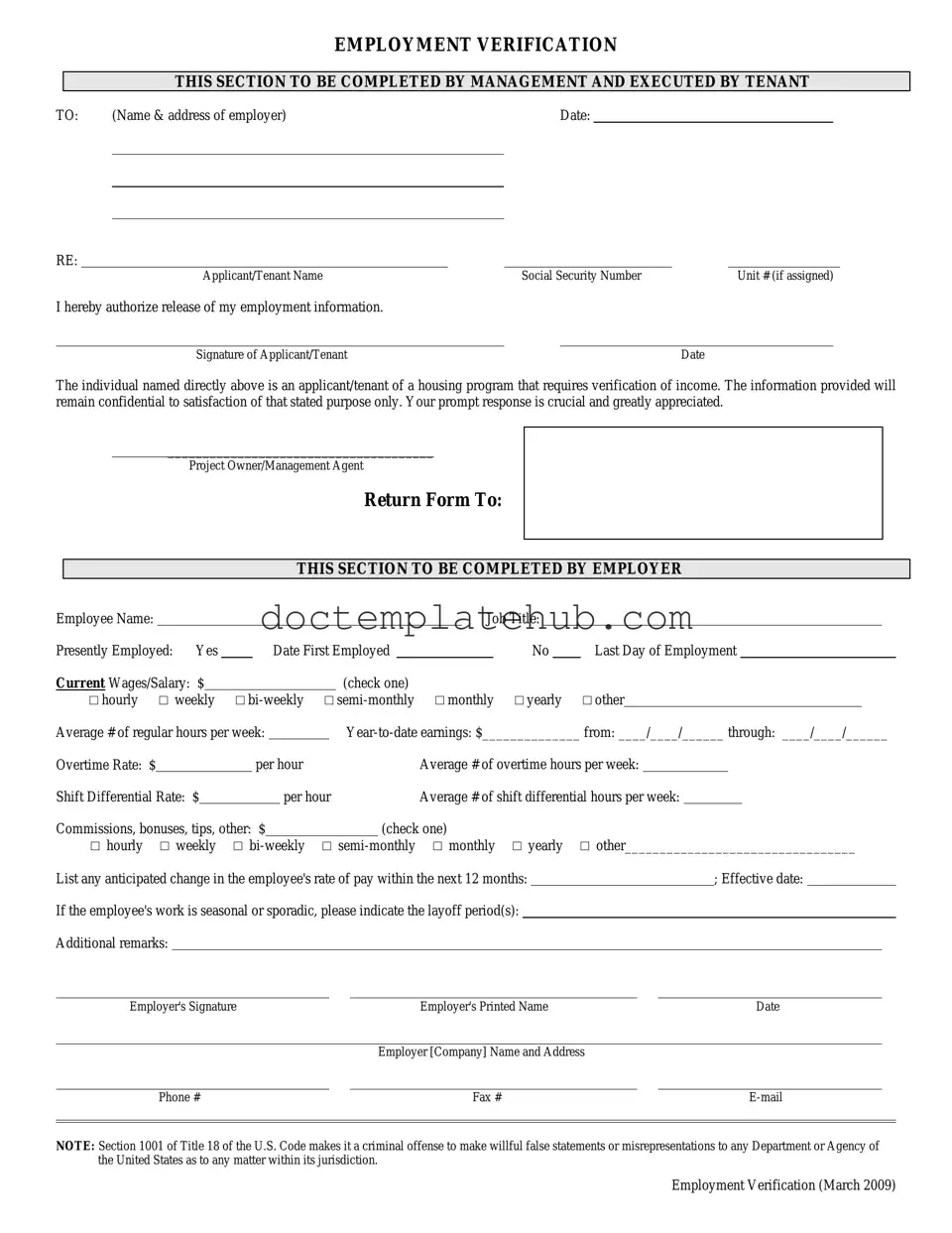What is an employment verification form?
An employment verification form is a document used by employers or third parties to confirm an individual's employment status. This form typically includes details such as the employee's job title, dates of employment, salary information, and the employer's contact information. It serves as a crucial tool for background checks, loan applications, and rental agreements.
Why is an employment verification form important?
This form plays a significant role in the hiring process and other situations where proof of employment is necessary. It helps potential employers or service providers assess the reliability and stability of an individual. Additionally, it can prevent fraud by ensuring that the information provided by the applicant is accurate and verifiable.
Who typically requests an employment verification form?
Various parties may request this form, including prospective employers, financial institutions, and landlords. Each of these entities seeks to verify an applicant's employment history and income to make informed decisions regarding hiring, lending, or leasing.
How do I fill out an employment verification form?
To fill out an employment verification form, provide accurate and complete information regarding your employment history. This includes your job title, dates of employment, and the name and contact information of your employer. If you are the one requesting verification, ensure that you have the consent of the individual whose employment is being verified.
What information is typically required on the form?
Commonly required information includes the employee's name, Social Security number (optional), job title, employment dates, salary, and the employer's contact details. Some forms may also ask for the reason for verification and any additional comments from the employer.
Can I refuse to provide an employment verification form?
While you can refuse to provide an employment verification form, doing so may hinder your chances of securing a job, loan, or rental agreement. Employers and other entities often rely on this verification to assess the credibility of applicants, and a refusal may raise red flags.
How long does it take to process an employment verification request?
The processing time for an employment verification request can vary. Typically, it may take anywhere from a few hours to several days, depending on the employer's response time and the complexity of the request. It is advisable to allow sufficient time for this process, especially when deadlines are involved.
What should I do if my previous employer does not respond?
If your previous employer does not respond to a verification request, consider following up with them directly. A polite reminder can sometimes expedite the process. If that fails, you may need to provide alternative documentation, such as pay stubs or tax forms, to support your employment history.
Are there any privacy concerns associated with employment verification forms?
Yes, privacy concerns can arise when sharing personal employment information. It is essential to ensure that the form is only shared with authorized individuals or organizations. Additionally, individuals have the right to know what information is being shared and to whom, which can help protect their privacy.
Can I obtain a copy of my employment verification form?
Yes, you can request a copy of your employment verification form from your employer. Employers are generally required to provide you with access to your employment records upon request. This transparency helps you ensure that the information is accurate and up to date.
